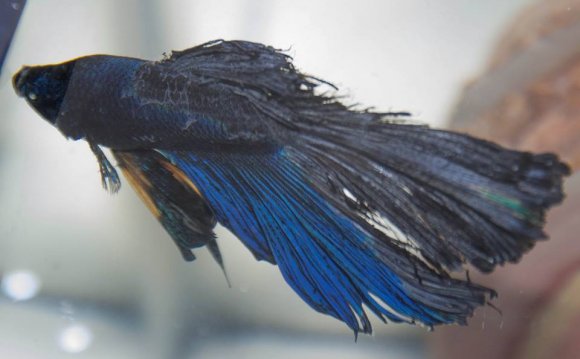

| Aquarium Salt |
|
Several people have emailed and asked for an explanation of why ordinary salt is useful in treating fish with Signs of Stress and Disease. Here are a few more facts about adding Aquarium Salt to the water in aquariums.
n my aquariums both Corydoras and many plants will tolerate 1 Tablespoon of Aquarium Salt per each 5 gallons of aquarium water, and they do poorly with 2 Tablespoons of Aquarium Salt per 5 gallons. Salt lessens the number of pathogens in the water. For example very few, perhaps only one or two groups, of freshwater bacteria tolerate aquarium salt well. My experience is that salt is slightly effective in preventing fish trouble in freshwater aquariums but only slightly. |
Just above, one of our favorite fish, a male Peacock Cichlid, came from Lake Malawi in very weak condition. We treated him with Aquarium Salt. He eventually recovered and matured into the beautiful fish in the picture. |  |
Salt is most effective, when the concentration of salt changes. So I keep my freshwater fish in water with very little salt. If I see one or more of the Signs of Stress or Disease, such as clamped fins, I immediately do all six steps of the Recommended Treatment, which includes adding 1 Tablespoon of Aquarium Salt per each 5 gallons of aquarium water.
Click here to read more about the Signs of Stress and Disease, and click here to read about all six steps of the Recommended Treatment. Marine Aquarists often give their marine fish a freshwater bath, and this is the same principle of changing the concentration of salt, but in this case by lowering rather than increasing the concentration of salt. |
|
Here's a plausible theory about how changing the concentration of salt in the water helps the fish. The pathogens, such as bacteria and protozoa, are simpler forms of life that have no internal organs to compensate for the change in salt concentration. But fish have organs, such as kidneys, that enable them to adjust to a small change in the concentration of salt. So changing the concentration of salt weakens the pathogens without harming the fish, and this gives the fish a better chance to recover.Before people had refrigerators and freezers, they used salt to preserve various foods especially meat. When meat was packed in salt, bacteria usually could not grow and cause the meat to spoil. Salt was very valuable to people. In fact in some areas of the world, salt was the most valuable substance. I was in a Home Depot store yesterday and saw a 50 lb. bag of water-softener salt. I estimated the price per lb., and I couldn't find anything else in the store that was less expensive. Even the bags of manure cost more per lb. than the salt. When I was very young and got a sore throat, my grandmother would put a teaspoon of salt in a big glass of warm water, give it a good stir, and then tell me to gargle with the salty water in my mouth. She believed that the salt would help cure my sore throat, and the salt may have killed many of the pathogens that were causing my sore throat. |
Summary | Salt has been used by people for a long time to stop pathogens from growing in their foods and in their throats, and now we still use salt to stop pathogens from growing in our aquariums and on our fish. |
Source: aquariumfish.net
Share this Post |









